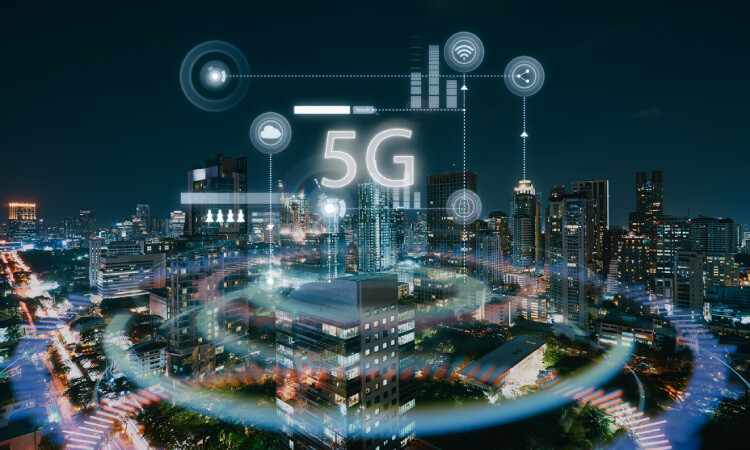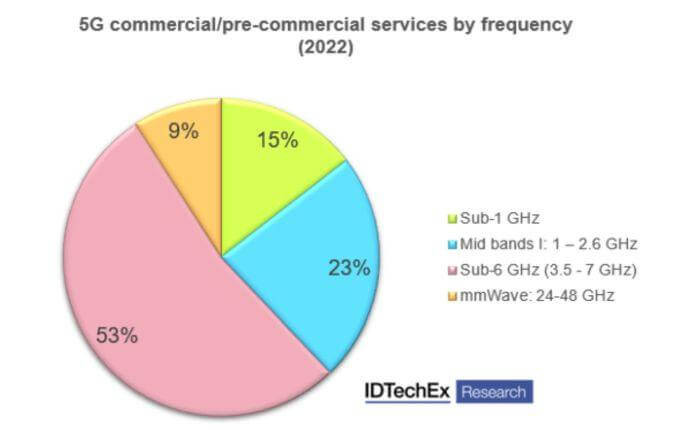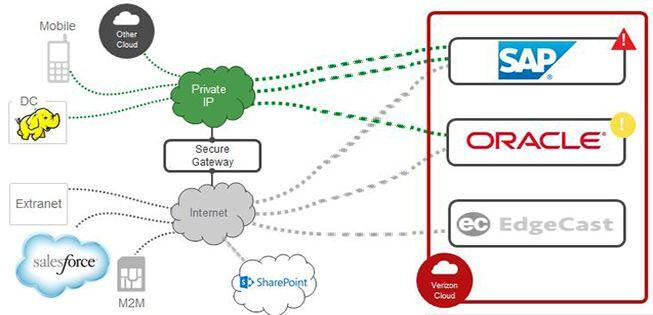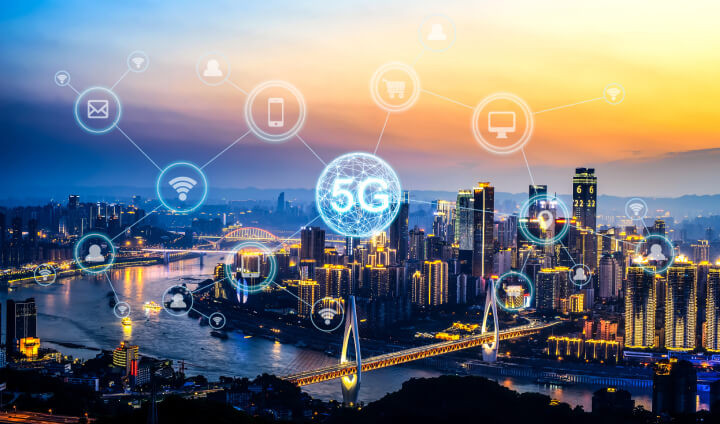5G Technology: What It Means for You and Businesses
Insights | 30-10-2023 | By Gary Elinoff

The advertisements are everywhere, and by now, everyone is familiar with the concept of 5G. Users are told that wherever they may roam, they will now enjoy broadband-level upload and download speeds on their tablets and smartphones and that they will be able to play video games from anywhere with no latency at all.
Well, maybe..
A common question among consumers and businesses alike is, 'When will 5G be widely available?' Currently, the availability of 5G varies significantly across different regions. While major urban areas are seeing quicker rollouts, rural areas may experience delays due to infrastructure challenges. Industry experts predict that by 2025, 5G will be broadly accessible, although this timeline may vary based on technological advancements and regulatory approvals.
The Reality of 5G Performance
The performance of 5G networks has been under intense scrutiny. Factors such as network density, spectrum allocation, and the deployment of small cells significantly influence 5G performance. Users should understand that while peak speeds can reach up to 10 Gbps, real-world performance may vary, particularly in areas with limited 5G infrastructure.
The reality of 5G's performance has been a mixed bag in some regions, with networks not living up to the hype and even lagging behind 4G in terms of speed. For instance, in countries like Australia and Taiwan, 5G download speeds have been reported to be slower than 4G. This revelation raises eyebrows and prompts the question: Why is the much-touted 5G underperforming?
Network performance depends on whether it's true 5G and the user's proximity to a cell tower. The higher, more potent 5G signals have a shorter range than 4G and can be obstructed by buildings and other structures.
5G promises faster speeds, lower latency, and more reliable connections. As Panasonic Connect highlights, its true value lies in its potential to revolutionize industries, beyond just faster download speeds for consumers.
For ordinary users, the main rewards, as of this writing, will be the bragging rights afforded by owning the latest and greatest 5G phone, and, of course, the outsized bill reflected its purchase cost.
But the story is more sanguine for industrial users, especially those that set up private networks. For these participants, 5G opens up a whole new vista of possibilities. But before we get into the details, let’s take a look at 5G operating frequencies and see what they’ll mean for different use cases.
For businesses, 5G means unlocking new opportunities and efficiencies. Enhanced connectivity can lead to innovations in remote work, telemedicine, and IoT applications. Companies can expect lower latency, higher data transfer rates, and improved reliability, which can transform operations and customer experiences across various industries.
Underlying Challenges of 5G Deployment
A primary reason for 5G's inconsistent performance is its reliance on 4G infrastructure, with many current networks being hybrid systems that combine elements of both 4G and 5G. This means they aren't truly standalone 5G networks, which can impact their efficiency and speed. Furthermore, the rollout of 5G is still in its infancy in many countries. These nations are in the process of optimizing their networks and waiting for the necessary spectrum allocations. But as the technology matures and more devices become 5G-compatible, we can anticipate improvements in both speed and coverage.
To appreciate 5G's significance, one must delve into its mechanics, akin to understanding a car's inner workings. When 5G first made its debut around 2018, it was built on a 5G radio access network but leaned heavily on a 4G core. This initial phase, known as 5G non-standalone (NSA), was a bridge between the 4G and 5G worlds, ensuring a seamless transition. However, the real magic begins with 5G standalone (SA), which operates on a 5G core. This evolution promises not only faster download speeds but also a leap in capacity, ultra-low latency communication, and a foundation for advanced IoT innovations.
5G technology represents a significant leap forward from previous generations. Utilizing higher frequency bands, advanced antenna technologies, and network slicing, 5G aims to provide not just faster internet speeds but also support for a massive number of connected devices and applications, ranging from autonomous vehicles to smart cities.
However, it's essential to temper our expectations. While the promise of 5G is undeniable, its current state reveals that there's still a long journey ahead before it can fully deliver on its potential. The spotty coverage in many countries, with some like the United States having 5G available in only a fraction of its regions, is a testament to the challenges faced in its deployment. But as with any new technology, the initial hurdles are part of the growth process. Over time, as infrastructure improves and the technology becomes more widespread, 5G is poised to reshape the landscape of mobile communications.
As the world eagerly anticipates the widespread availability of 5G, the question 'When will 5G be everywhere?' looms large. Experts suggest that universal 5G coverage is likely to be achieved by the late 2020s. This expansion depends on global collaboration among telecom companies, governments, and tech innovators to overcome deployment challenges and ensure equitable access.
5G Operating Frequencies
Broadly speaking, there are 4 frequency bands allocated to 5G communications, they are:
- Sub-1: 1 GHz and below
- Midbands: ranging from 1 to 2.6 GHz
- Sub-6 GHz: 3.5 to 7 GHz
- mmWave: 24 to 48 GHz
We’ve all heard about the ultra-high frequencies that are to be employed in 5G, with the rationale being that the higher the frequency, the more information can be carried. The highest frequencies allotted to 5G range from 24 to 48 GHz; this is called the mmWave band, as the wavelengths of these frequencies are in the range of millimetres. As we can see below, only 9% of traffic is carried over the lofty mmWave band.
A full 38% (15% Sub-1 and 23% Midbands) carried at frequencies below 2.6 GHz. This actually compares to the frequencies over which 4G traffic travels!
Yet, despite the challenges, the potential of 5G remains vast. Its ability to support a myriad of applications, especially those that require high-speed data transfer and low latency, is unparalleled. As the technology matures, we can expect to see a shift in traffic towards higher bandwidths, unlocking new possibilities and use cases that were previously unimaginable.

5G Operational Bandwidths. Image source: IDTechEx
Of course, this will change as time goes on and more 5G traffic migrates to higher bandwidths, and there are types of communications that are actually better suited to the lower bandwidths. As we’ll see, there’s a lot more to 5G than just high frequencies.
Indeed, the narrative around 5G is not just about speed. It's about the broader ecosystem it supports and the transformative impact it can have across industries. From healthcare to entertainment, transportation to education, 5G's potential to revolutionize is immense. But as with any transformative technology, the road to realization is filled with challenges and learning curves. The current state of 5G, with its mixed performance results, is just a snapshot in its evolutionary journey. As the technology matures, optimizes, and becomes more pervasive, the true power of 5G will unfold, reshaping our digital world in ways we are yet to fully comprehend.
Present Day 5G Deployment – The Dirty Little Secret
As described by Panasonic[1], while MNOs promote 5G to consumers, and devices indicate 5G connectivity, the reality is that most public 5G networks still rely on existing 4G infrastructure. The industry calls this 5G non-standalone or 5GNSA.” The benefits of 5GNSA to consumers are slight at best. The true value of 5G lies in 5G standalone or 5GSA, a network built from the ground up dedicated to offering uncompromised, fully modern 5G.
The distinction between 5G NSA and 5G SA is crucial. 5G NSA is the initial phase of 5G rollout, which relies on existing 4G infrastructure. On the other hand, 5G SA is the next phase, which will be a completely new network infrastructure, offering the full benefits of 5G technology. As Panasonic Connect emphasizes, "The true value of 5G lies in 5G standalone or 5GSA, a network built from the ground up dedicated to offering uncompromised, fully modern 5G."
As Verizon[2] describes it, “When thinking about 5G SA technology, it helps to think about the radio access network (RAN), which is the part of the network that wirelessly receives and transmits data from and to devices (like your mobile phone or tablet), and the core, which is the back-end system that then connects to the wider world of the internet, and provides access to computing and workload capabilities.”
Verizon’s 5G Core
For consumers interested in Verizon's 5G home internet services, the rollout schedule is a crucial piece of information. Verizon has announced plans to expand its 5G home internet service to cover over 30 million households by 2023, focusing initially on urban areas and gradually moving to suburban and rural regions. This phased rollout aims to ensure robust service quality and reliability.
When Verizon first rolled out 5G in 2018, it employed a 4G core along with an advanced RAN, effectively offering 5GNSA, which the company described as a first step towards transitioning from 4G to 5G. Later, in 2022, it started to move its commercial customers to its 5G core. When this is accomplished, users enjoy the full benefits of 5G.

Verizon’s Flexible Approach to the Cloud. Image Source: Verizon
Verizon's approach to 5G is a testament to the technology's transformative potential. Their 5G core, built on the Verizon Cloud Platform (VCP), is a game-changer. This cloud-based platform, tailored for telecommunications workloads, offers unparalleled reliability and performance. It's not just about speed; it's about creating a flexible, dynamic, and resilient network infrastructure that can adapt to the ever-evolving demands of the digital age.
The company’s Verizon Verizon Cloud Platform (VCP) is an intelligent distributed platform that employs analytics to determine if one of its servers is about to go down and can move communications to an operational location. It can also move communications workloads closer to applications, such as edge computing, as needed to lower latency.
Issues Confronting mmWave Bandwidths
Radio waves at these ultra-high frequencies do not travel far, so many more cellular towers will be needed to support 5GSA. This is only possible in densely populated areas, such as central cities, and of course, deployment may be hampered by local opposition. In addition, components that can be operated over the mmWave frequencies are expensive and not widely available.
As such, most 5GSA systems rely on what is often called the C-band (4 to 8 GHz). The bottom line, as per IEEE Spectrum[3], is that “The aspirational 5G download speed of 20 Gb/s originally cited by the International Telecommunication Union is still just that—aspirational.”
Consumers living in areas served by C-band 5GSA can download movies a bit faster, and they can play video games with little or no latency. For others, 5G still requires an expensive, top-of-the-line smartphone and really offers little more than bragging rights.
For specialized private networks, it’s a very different story.
Private Networks
Private 5G networks function similarly to public 5G networks but allow the owner to provide restricted access and use licensed or unlicensed wireless spectrum. The main advantage of these networks is their restricted access, specialization, and the ability to reconfigure the network as needed.
As described by Redhat[4], a private network leases portions of the spectrum and might deploy the different 5G bands in the most economical manner. The network owner will deploy expensive mmWave operations only for tasks requiring the highest speeds and lowest possible latency. Because the network is private, the operators also own (or control) all the devices on the network, ensuring a perfect match between all physical and software components, which isn't always possible in public networks.
So, while 5G hasn’t contributed much to general users other than a more satisfying gaming experience and the ability to download a movie a few seconds faster, the examples below will illustrate the truly game-changing application made possible by private 5G networks.
The Industrial Internet of Things (IIoT)
As described by Amazon, “The Industrial IoT (IIoT) brings machines, cloud computing, analytics, and people together to improve the performance and productivity of industrial processes.”[5]. Furthermore, “A typical industrial facility has thousands of sensors generating data. With IIoT, manufacturers, for example, can combine machine data from a single line, factory, or a network of sites, such as manufacturing plants, assembly facilities, and refineries, to proactively improve performance by identifying potential bottlenecks, failures, gaps in production processes, and quality issues before they happen.”

The Internet of things.
There are billions of devices now connected worldwide on the IioT. Even with the advantages afforded by Embedded Systems and Edge Computing, these innumerable devices still generate a titanic amount of data. According to an International Data Corporation (IDC) forecast published by Dell[6], it is estimated that there will be 41.6 billion IoT devices in 2025, capable of generating 79.4 zettabytes (ZB) of data. BTW, zeta stands for 10^21!
Through a 5G-powered private network, the factory floor, a section of farmland to be controlled or miles of an oil pipeline to be monitored can each be transformed into a gigantic “computer.” Much of the data can be analyzed locally and not simply dumped onto the public Internet to be analyzed by a computational network located a world away.
The advancements in 5G technology, especially in the realm of 5G SA, are not just about faster internet or smoother gaming experiences. They're about paving the way for future innovations. As Karen Schulz from Verizon aptly puts it, technologies like 5G SA are not just about the present benefits but also about setting the stage for what's to come. As we look ahead, it's exciting to imagine the new applications, services, and breakthroughs that will be made possible by this revolutionary technology.
Challenges and Opportunities
The major carriers are racing to provide 5GSA to as many locations as possible. Priorities are large urban areas and anywhere where large numbers of people gather, such as ballparks, festivals and concert venues. Where 5GNSA is available, providers will need to upgrade 5GSA ASAP before the public realizes that there might not be much in it for them. But, maybe the ruse can continue, as people, Americans in particular, will make great sacrifices to purchase cars that can travel at 130 mph when the speed limit is only 55.
But whatever happens in the consumer world, 5G, especially when part of a private network, is enabling entire new worlds of possibilities.
Wrapping Up
5G networks, along with artificial intelligence and edge computing, will make possible the further proliferation of the IoT and the IIoT. These topics, worthy of their own exposition, will be covered in subsequent blogs. The production of mmWave components is difficult because of both engineering obstacles and the very fundamental constraints of physics. Thus, in the near term, progress in the utilization of these ultra-high frequencies will be slow and quite specialized.
Private networks will be able to determine, in real-time, when the use of mmWave bandwidths can be advantageous and even necessary and use them when they are needed for the highest speed and lowest latency. Private networks also have the advantage of being largely isolated and, in addition, can provide their own internal security.
In conclusion, while the buzz around 5G often revolves around consumer benefits, its true potential lies in its capacity to revolutionize industries. From private networks to the Industrial Internet of Things (IIoT), 5G is more than just a faster version of 4G; it's a catalyst for innovation, opening doors to possibilities we've yet to imagine.
Glossary
- 5GSA: A5G Standalone network is based entirely on the 5G specification. This includes the core (base station) and the antenna. It also requires that the end device (such as a smartphone)isitself built to support 5G.
- 5GNSA: A 5G Not Standalone network features the old 4G core but an updated antenna system. It, too, requires that the receiving device be equipped for 5G. At this writing, most public 5G is still 5GNSA.
- Internet of Things (IoT): The collective network of connected devices and the technology thatfacilitatescommunication between devices and the cloud, as well as between the devices themselves.
References
1. Demystifying the hype from the hope in 5G. Panasonic Connect: https://eu.connect.panasonic.com/fi/en/blog/demystifying-hype-hope-5g
2. 5G standalone: What it is and why it matters for businesses and consumers. Verizon: https://www.verizon.com/about/news/5g-standalone-why-it-matters
3. 5G Networks Are Performing Worse. What’s Going On? IEEE Spectrum: https://spectrum.ieee.org/5g-rollout-disappointments#toggle-gdpr
4. What is private 5G. Red Hat: https://www.redhat.com/en/topics/5g-networks/what-is-private-5g
5. What is IoT (Internet of Things). Amazon: https://aws.amazon.com/what-is/iot/
6. Internet of Things and data placement. Dell: https://infohub.delltechnologies.com/l/edge-to-core-and-the-internet-of-things-2/internet-of-things-and-data-placement/

